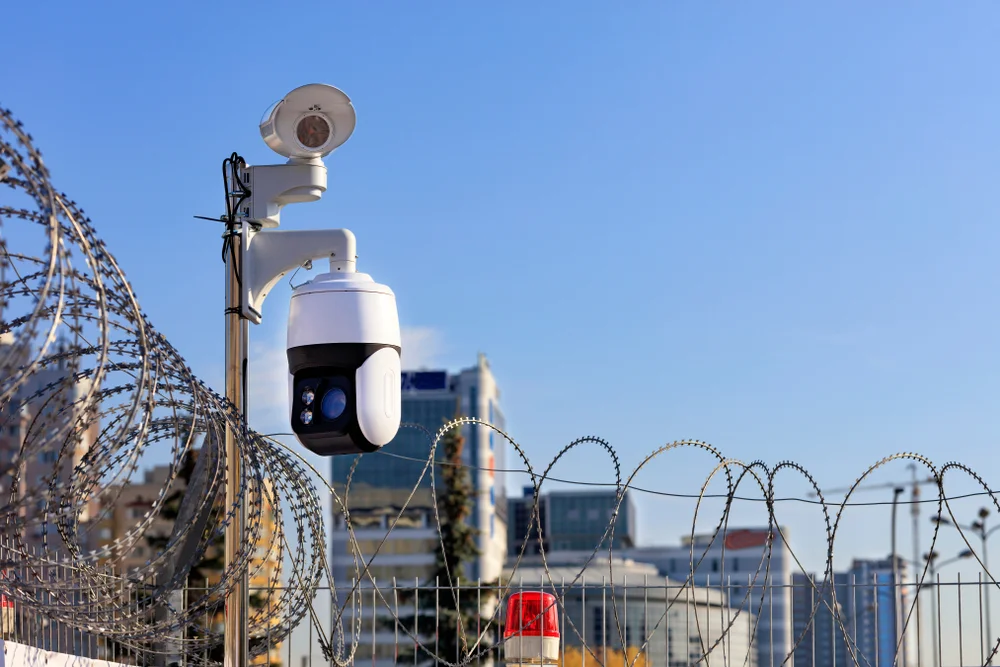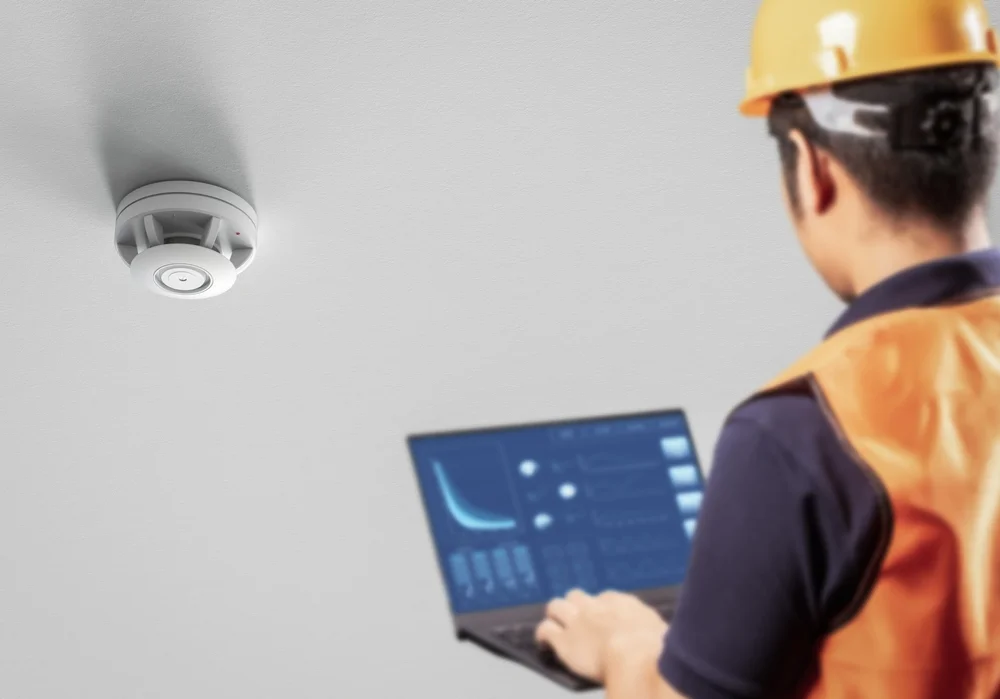Perimeter Intrusion Detection

Perimeter Intrusion Detection • A Perimeter Intrusion Detection System (PIDS) is a security solution designed to detect the presence of an intruder attempting to breach the physical boundary or perimeter of a protected property, facility, or secure area. • PIDS acts as the first line of defense, providing an early warning that allows security personnel to respond before the intruder can gain access to critical assets, buildings, or internal zones. Key Components and Function • PIDS combines various technologies to create a comprehensive and reliable security layer. 1. Detection Sensors: These are the core components that generate an alert when the perimeter is disturbed. 2. Central Control Unit/Processor: This unit receives signals from the sensors, analyzes the data to filter out environmental noise (like wind or small animals), and determines if a true alarm condition exists. 3. Alarm and Integration System: The processor triggers a response, such as : • Sending an alert to a central monitoring station. • Activating deterrents (e.g., lights, sirens). • Integrating with CCTV to automatically direct a camera to the alarm location for visual verification. Common Detection Technologies 1. PIDS technologies are generally categorized based on where the sensor is placed: on a fence, in an open area, or buried underground. 2. Fence-Mounted SensorsAttached directly to the fence fabric or support posts.Detects vibration (from climbing or cutting), tension (from lifting the fence), or acoustic signatures. Often uses fiber optic cable or specialized microphonic cable.Facilities with existing physical fences (military bases, industrial sites). 3. Active Infrared (IR) BeamsPosts placed at intervals to create an invisible beam path.An alarm triggers if a continuous beam of invisible IR light is broken by a person or object crossing the area between the transmitter and receiver.Gates, walls, or open, flat stretches where a clear line of sight is available. 4. Microwave/Radar BarriersTransmitter and receiver units placed at distances to create a three-dimensional detection field.Uses radio waves (microwave) or pulsed signals (radar) to detect movement within the zone.Large, open areas or complex terrain where IR beams are impractical. 5. Buried SensorsPlaced underground, either near the fence line or across an open field.Detects seismic or pressure changes in the soil caused by footsteps, vehicles, or digging attempts.High-security or covert applications where visual detection is not desired (e.g., borders). 6. Video AnalyticsUsed with standard or thermal CCTV cameras.AI algorithms analyze the video feed in real-time to identify suspicious actions (loitering, climbing, entering a restricted zone) and distinguish human activity from environmental factors.As a primary system or for alarm verification in almost any application. • The most effective PIDS installations often use a layered security approach, combining two or more complementary technologies to maximize detection accuracy and minimize false alarms.
Abandoned or Removed Object Detection

Abandoned or Removed Object Detection Abandoned or Removed Object Detection is a crucial capability in intelligent video surveillance systems, utilizing advanced computer vision and machine learning (often Deep Learning) to analyze video streams and automatically alert security personnel to potentially suspicious activity involving static objects. This technology is paramount in high-security, high-traffic environments like airports, train stations, museums, and shopping centers, where an abandoned package could pose a threat, or a removed object could indicate theft. Abandoned Object Detection (AOD) AOD focuses on identifying an item that has been left behind and remains stationary and unattended for a suspicious duration. How it Works : 1. Background Subtraction/Foreground Segmentation: The system continuously models the normal background of the scene. In each frame, it compares the current image to the established background model to segment (separate) the foreground objects (moving people, vehicles, etc.). 2. Object Tracking: Any new object appearing in the scene is detected and tracked. The system monitors its trajectory and velocity. 3. Stationary Detection: If the tracking analysis shows an object has become stationary for a defined period (e.g., 30 seconds to 5 minutes, depending on the environment), it becomes a candidate for an abandoned object. 4. Contextual Analysis (Crucial Step): The system often uses more sophisticated logic to reduce false alarms : Owner Proximity: It checks the tracking data to see if the person who dropped the object has moved a significant distance away (unattended). Classification: It classifies the object (e.g., bag, suitcase, box) to ensure it is not a normal part of the scene (like a trash can or a permanent bench). 5. Alert Generation: If all criteria (stationary, unattended, elapsed time) are met, an alarm is triggered, and often the camera view is automatically brought up for human verification. Removed Object Detection (ROD) ROD is the opposite: it focuses on detecting the unauthorized disappearance or removal of a valued item from a specific, defined location. How it Works : 1. Reference Point/Initial Background Storage: This process requires the system to know the “normal” state of a scene, with the object present. For valuable items (e.g., a painting in a museum, a piece of retail merchandise), a Region of Interest (ROI) is typically drawn around the object during setup. 2. Object Persistence: The system continuously monitors the ROI, verifying that the target object remains in its expected position. 3. Removal Event: If the object’s signature (color, texture, edge features) is suddenly replaced by the underlying background (i.e., the object is gone), a removal event is detected. 4. Temporal Verification: To avoid false alarms from brief occlusions (e.g., a person standing in front of the object), the system confirms the object’s absence over a short period. 5. Alert Generation: The system immediately triggers an alert, identifying the exact time and location of the theft/removal. Key Technical Challenges Both AOD and ROD rely heavily on robust computer vision, which presents several common challenges : 1. Illumination Changes: Sudden changes in light (e.g., a cloud passing over, lights being switched on/off) can momentarily confuse background models, leading to false alarms (often called “ghosting”). 2. Occlusion: Objects or people partially or completely blocking the view of an abandoned or removed object can complicate tracking and verification. 3. Camouflage: An object blending into a cluttered or textured background makes initial detection difficult. 4. Small Objects: Detecting small items (like a phone or a small purse) from a distance or with low resolution is still a major challenge.
Vehicle Monitoring

Vehicle Monitoring • That’s a great topic! Vehicle Monitoring is a comprehensive technology-driven solution, often referred to as a Vehicle Monitoring System (VMS) or telematics, designed to track, manage, and report on the operational data and location of individual vehicles or entire fleets. • It’s widely used in fleet management, logistics, public transport, and for personal vehicle security. How Vehicle Monitoring Systems Work • Vehicle monitoring generally involves a combination of hardware, connectivity, and software : 1. Data Collection (Hardware) : A device, often called a telematics device or GPS tracking unit (sometimes a “black box”), is installed in the vehicle. This hardware collects data from various sources : • GPS Receiver : Determines the vehicle’s precise location, speed, and direction. • Internal Sensors (Accelerometer/Gyroscope) : Detects driving behaviors like harsh braking, rapid acceleration, speeding, and cornering. • Vehicle Diagnostics : Connects to the vehicle’s internal computer (via the OBD-II port or CAN bus) to gather data on engine health, fuel levels, mileage, tire pressure, and diagnostic trouble codes (DTCs). 2. Data Transmission (Connectivity) : The collected data is transmitted in real-time or near real-time from the device to a central server or cloud platform. This is typically done using wireless communication technologies like cellular networks (4G/5G) or satellite systems. 3. Analysis and Reporting (Software) : The central software platform processes the raw data and converts it into understandable information, which is then displayed to the user (fleet manager, business owner, or private individual) via a web interface or mobile app.
